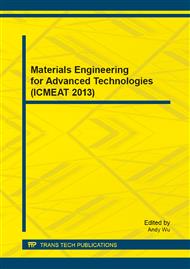p.79
p.86
p.91
p.97
p.101
p.106
p.110
p.114
p.118
Crack-Less Electrical Discharge Machining of Molybdenum with Titanium Electrode
Abstract:
This paper describescrack-less electrical discharge machining (EDM) of molybdenum (Mo) with titanium (Ti) electrode. Mo is often machined by EDM because of its high hardness. However, a molybdenum carbide (MoC and Mo2C) layer with high hardness and brittleness is formed by EDM in kerosene oil. Moreover, Mo becomes recrystallizationembrittlement at high temperature. Therefore, many cracks occurred in the EDMed surface. On the other hand, the addition of Ti rises recrystallization temperature and improves high temperature strength of Mo.In order to decrease the cracks in the machined surface, Mo was machined by EDM with a Ti electrode in deionized water. In the case of the positive electrode polarity, many cracks occurred in the base material and recast layer. The cracks in the base material might generate by crystal grain boundary embrittlement. In contrast, the EDMed surface indicated crack-less on the negative electrode polarity. To clarify the causes of crack-less surface on negative electrode polarity, componential analysis of EDMed surface was carried out. The component ratio of Ti on the negative electrode polarity was higher than that on the positive. In addition, the recast layer was composed by Mo-Ti solid solution.
Info:
Periodical:
Pages:
101-105
Citation:
Online since:
February 2014
Authors:
Price:
Сopyright:
© 2014 Trans Tech Publications Ltd. All Rights Reserved
Share:
Citation:


